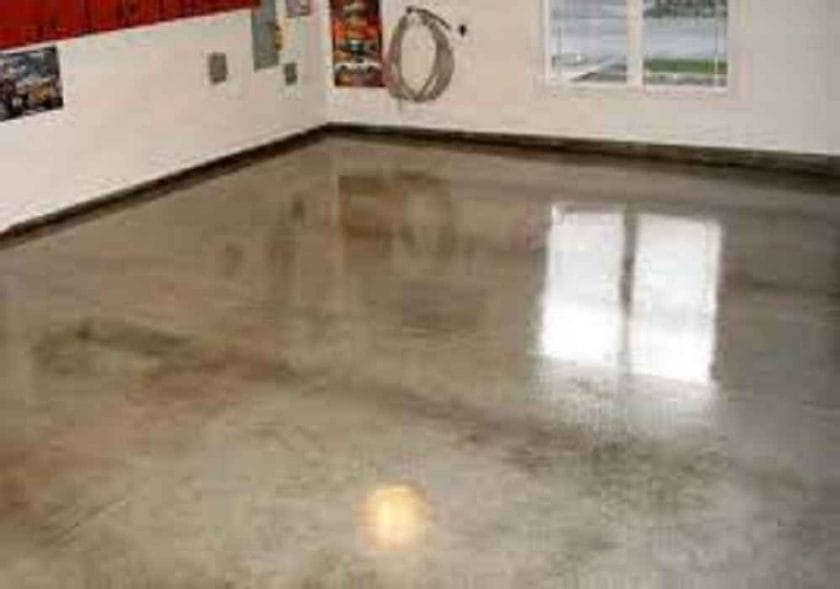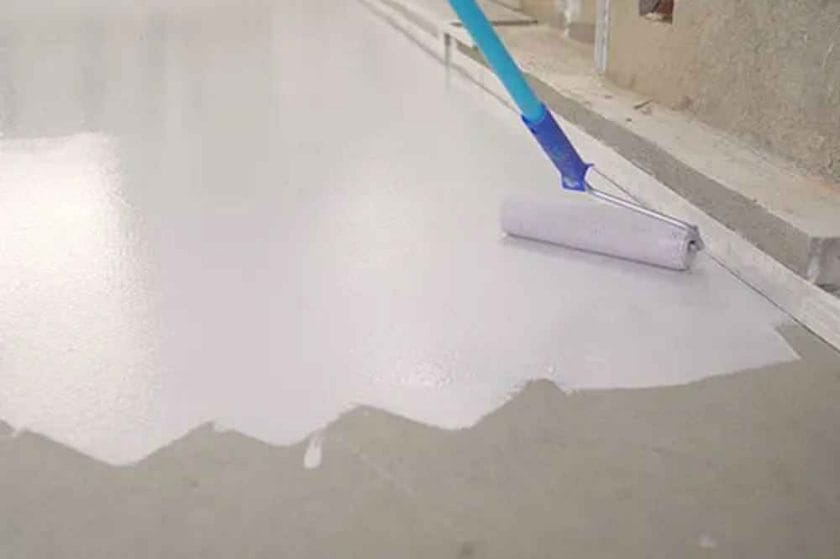Acrylic paint is a versatile and popular type of paint used for a variety of surfaces, including concrete. It’s known for its quick-drying and durable characteristics, making it a great option for concrete surfaces.
To ensure that the acrylic paint lasts longer on concrete, it is important to seal the acrylic paint. By sealing the acrylic paint on concrete, it protects the paint from fading, peeling, or chipping and extends its lifespan.
In this article, we will provide a comprehensive guide on how to seal acrylic paint on concrete effectively and efficiently.
Understanding Concrete and its Characteristics:
Concrete is a building material made from a mixture of cement, water, sand, and aggregate (such as gravel or crushed stone). It’s widely used for building foundations, floors, walls, and other structures.
Understanding the characteristics of concrete is crucial when sealing acrylic paint on it. Some of the properties of concrete include:
Porosity:
Concrete is porous, meaning it has tiny holes that allow water and other substances to penetrate the surface. This makes it important to seal the surface to prevent moisture from affecting the paint.
Hardness:
Concrete is a relatively hard material, but it can be brittle and prone to cracking. When applying a sealant, it’s important to choose one that won’t crack or peel under stress.
Absorption:
Concrete has a high absorption rate, meaning it can soak up liquids quickly. This makes it important to choose a sealant that won’t change the appearance of the paint or discolor the surface.
Preparing the Surface
The first step in sealing acrylic paint on concrete is to prepare the surface. This involves cleaning the surface thoroughly and smoothing any rough or uneven areas. Here are the steps to prepare the surface for sealing:
Clean the surface:
Use a mild detergent or degreaser to clean the surface and remove any dirt, grease, or grime. Rinse the surface thoroughly with water and let it dry completely.
Sand rough areas:
If there are any rough or uneven areas on the surface, sand them down with sandpaper until they are smooth.
Patch cracks and holes:
If there are any cracks or holes in the surface, fill them with concrete filler and let it dry completely.
The tools and materials required for surface preparation include:
- Mild detergent or degreaser
- Water
- Sandpaper
- Concrete filler
- Clean rags or towels
Select the Right Sealant
There are several types of sealants available for sealing acrylic paint on concrete, each with its own pros and cons. Here’s a brief overview of the different types of sealants:

Water-based sealants:
These sealants are easy to apply and clean up, and they dry quickly. However, they may not be as durable as other types of sealants and may need to be reapplied more frequently.
Solvent-based sealants:
These sealants are more durable than water-based sealants and provide better protection against fading and discoloration. However, they are more toxic, harder to clean up, and take longer to dry.
Epoxy sealants:
These sealants are very durable and provide excellent protection against fading and discoloration. They are also resistant to moisture, chemicals, and abrasion.
However, they are more difficult to apply and may be more expensive than other types of sealants.
When choosing a sealant for your project, consider the following factors:
- Durability: How long do you want the sealant to last?
- Application: How easy is it to apply the sealant?
- Appearance: Does the sealant change the appearance of the paint or discolor the surface?
- Cost: How much are you willing to spend on the sealant?
Applying the Sealant
Once you’ve chosen the right sealant for your project, it’s time to apply it. Here are the steps involved in applying the sealant:
- Stir the sealant thoroughly: If the sealant has settled, stir it thoroughly to ensure it’s evenly mixed.
- Apply the sealant: Use a paint brush or roller to apply the sealant evenly to the surface. Follow the manufacturer’s instructions for the best results.
- Allow the sealant to dry: Let the sealant dry completely, following the manufacturer’s instructions for drying time.
The tools and materials required for applying the sealant include:
- Paintbrush or roller
- Sealant
- Stir stick
Caring for the Sealed Surface
To maintain the sealed surface and extend the lifespan of the acrylic paint, it’s important to take good care of it. Here are some steps for caring for the sealed surface:
- Clean the surface regularly: Use a mild detergent and water to clean the surface regularly. Avoid using abrasive cleaners or harsh chemicals that could damage the surface.
- Avoid heavy foot traffic: If the surface is in an area with heavy foot traffic, consider placing a rug or mat to protect the paint.
- Seal the surface periodically: Reapply the sealant periodically, following the manufacturer’s instructions for frequency.

Conclusion
In conclusion, sealing acrylic paint on concrete is an effective way to protect the paint and extend its lifespan.
By preparing the surface, choosing the right sealant, applying the sealant correctly, and caring for the sealed surface, you can achieve great results.
Whether you’re a DIYer or a professional, this comprehensive guide should help you achieve the best results for your project.
Can I use a clear acrylic sealant to seal acrylic paint on concrete?
Yes, you can use a clear acrylic sealant to seal acrylic paint on concrete. Clear acrylic sealants are water-resistant and provide a protective barrier that helps prevent the paint from fading, discoloring, or peeling.
When selecting a clear acrylic sealant, choose one that is specifically designed for sealing acrylic paint.
How often do I need to reapply the sealant?
The frequency at which you need to reapply the sealant depends on several factors, such as the type of sealant you use, the amount of foot traffic the surface receives, and the level of exposure to sunlight and moisture.
Generally, it’s a good idea to reapply the sealant every 2-3 years or as needed. Check the manufacturer’s instructions for specific recommendations.
Can I apply the sealant to a surface that has already been painted?
Yes, you can apply the sealant to a surface that has already been painted. However, it’s important to clean the surface thoroughly before applying the sealant and to make sure the paint is completely dry.
If the paint is not completely dry, the sealant may not adhere properly and could result in a poorly sealed surface.
Is it necessary to prepare the surface before applying the sealant?
Yes, preparing the surface before applying the sealant is an important step. Cleaning the surface thoroughly and removing any dirt, oil, or debris will help ensure that the sealant adheres properly and provides the best results.
If the surface is not cleaned properly, the sealant may not adhere properly and could result in a poorly sealed surface.
Can I use a different type of sealant if I can’t find the specific sealant recommended by the manufacturer of the acrylic paint?
While it’s best to use the specific sealant recommended by the manufacturer of the acrylic paint, you can use a different type of sealant if you can’t find it.
However, make sure to choose a sealant that is compatible with acrylic paint and is specifically designed for sealing concrete surfaces. Additionally, make sure to follow the manufacturer’s instructions for application, drying time, and frequency of reapplication.
